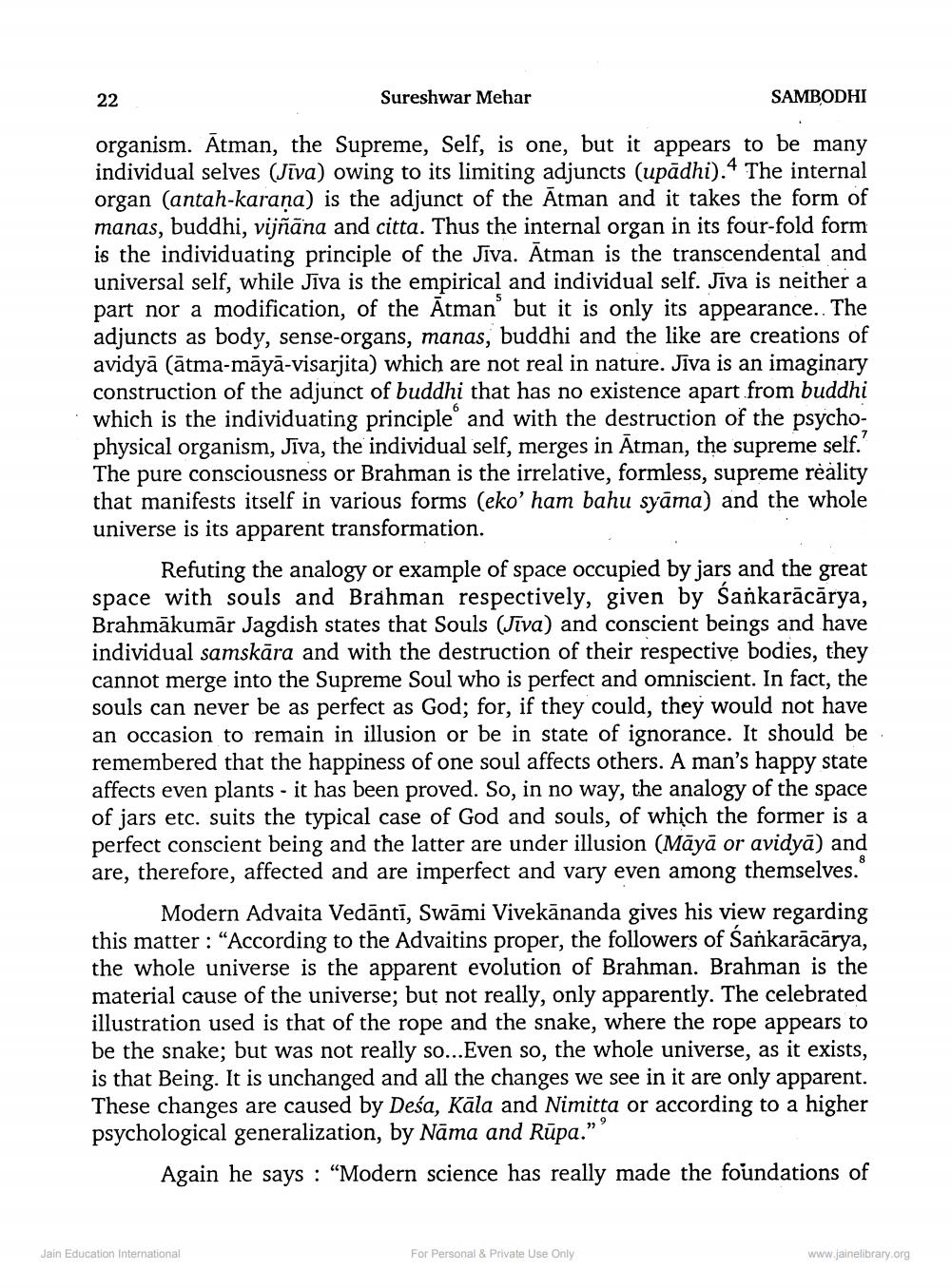________________
22
Sureshwar Mehar
SAMBODHI
organism. Atman, the Supreme, Self, is one, but it appears to be many individual selves (Jīva) owing to its limiting adjuncts (upādhi).4 The internal organ (antah-karana) is the adjunct of the Ātman and it takes the form of manas, buddhi, vijñāna and citta. Thus the internal organ in its four-fold form is the individuating principle of the Jiva. Ātman is the transcendental and universal self, while Jiva is the empirical and individual self. Jiva is neith part nor a modification, of the Ātman' but it is only its appearance. The adjuncts as body, sense-organs, manas, buddhi and the like are creations of avidyā (ātma-māyā-visarjita) which are not real in nature. Jīva is an imaginary construction of the adjunct of buddhi that has no existence apart from buddhi which is the individuating principle and with the destruction of the psychophysical organism, Jiva, the individual self, merges in Ātman, the supreme self. The pure consciousness or Brahman is the irrelative, formless, supreme reality that manifests itself in various forms (eko' ham bahu syama) and the whole universe is its apparent transformation.
Refuting the analogy or example of space occupied by jars and the great space with souls and Brahman respectively, given by Śankarācārya, Brahmākumār Jagdish states that Souls (Jiva) and conscient beings and have individual samskāra and with the destruction of their respective bodies, they cannot merge into the Supreme Soul who is perfect and omniscient. In fact, the souls can never be as perfect as God; for, if they could, they would not have an occasion to remain in illusion or be in state of ignorance. It should be remembered that the happiness of one soul affects others. A man's happy state affects even plants - it has been proved. So, in no way, the analogy of the space of jars etc. suits the typical case of God and souls, of which the former is a perfect conscient being and the latter are under illusion (Māyā or avidyā) and are, therefore, affected and are imperfect and vary even among themselves."
Modern Advaita Vedāntī, Swāmi Vivekānanda gives his view regarding this matter : "According to the Advaitins proper, the followers of Sankarācārya, the whole universe is the apparent evolution of Brahman. Brahman is the material cause of the universe; but not really, only apparently. The celebrated illustration used is that of the rope and the snake, where the rope appears to be the snake; but was not really so...Even so, the whole universe, as it exists, is that Being. It is unchanged and all the changes we see in it are only apparent. These changes are caused by Desa, Kāla and Nimitta or according to a higher psychological generalization, by Nāma and Rūpa.”
Again he says : "Modern science has really made the foundations of
Jain Education International
For Personal & Private Use Only
www.jainelibrary.org




